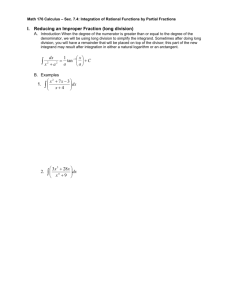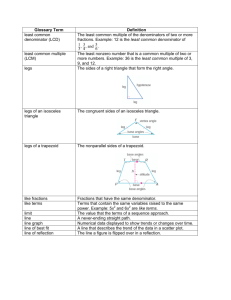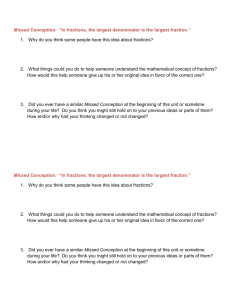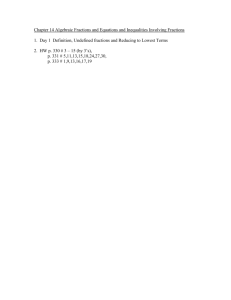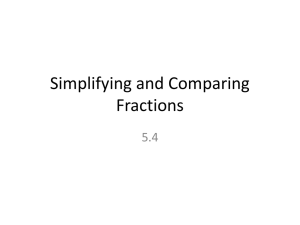Measurement
advertisement
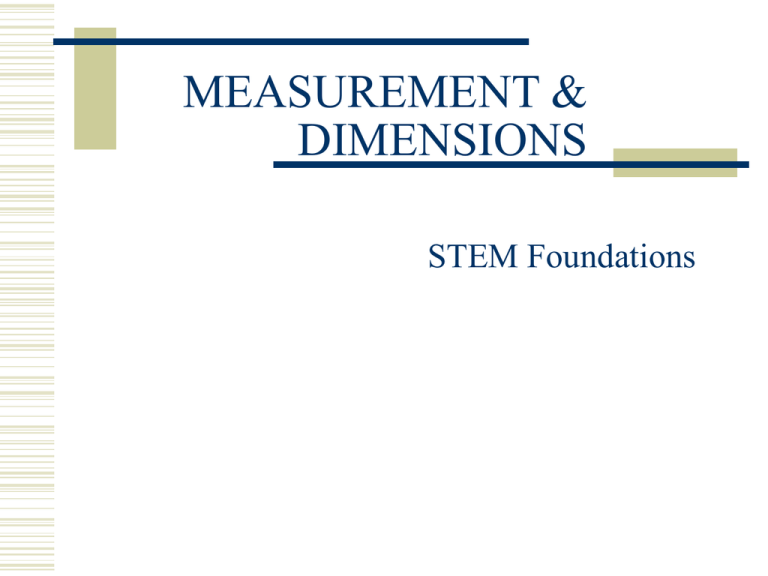
MEASUREMENT & DIMENSIONS STEM Foundations MEASUREMENT & DIMENSIONS Essential Question for the Lesson: How do we use measurement in both the SI and English Standard measurement systems? Measurement Background Over 20 billion measurements are made daily in the US. Old standard systems dates back to early monarchy of England (8th & 9th century) King Henry I – nose to finger tip = yard King Edgar- knuckle = inch King Charles- royal foot = 1 foot Measurement Background SI system is an international system based off of units of 10 US is the only industrial nation not to use SI system as its standard system Why? Used world wide in science, engineering & trade International System (SI) Developed by the French in the early 1800’s Base unit is a meter Smallest division is a millimeter 10 mm=1 centimeter (cm) 10 cm=1 decimeter (dm) 10 dm = 1 meter PRACTICE SHEET Complete the Metric Measurement Lab #1 handout for review READING A RULER The red lines on these rulers are marked at 1/2, and 1 The red marks on these rulers are at 1/4, 1/2, 3/4, and 1. (1/2 is the same as 2/4) The red marks on these rulers are at 1/8, 1/4, 3/8, 1/2, 5/8, 3/4, 7/8, and 1. The red marks on this ruler are at 1/16, 1/8, 3/16, 1/4, 5/16, 3/8, 7/16, 1/2, 9/16, 5/8, 11/16, 3/4, 13/16, 7/8, 15/16, and 1. DIVIDING FRACTIONS In building/designing there will be several times you will need to determine half of a specific measurement. When dividing fractions by 2, we will multiply the fraction by the reciprocal of 2 which is ½. Our numerator is multiplied by 1 and the denominator is multiplied by 2. Ex: What is half of 5/8? *Hint: Simply double the denominator. Answer=5/16 DIVIDING FRACTIONS Divide the following fractions in half: 1. 2. 3. 4. 5. ¾= 3/8 1/8= 1/16 5/16= 5/32 7/8= 7/16 1-11/16= 27/32 ADDING FRACTIONS Make sure the bottom numbers (the denominators) are the same (Least common denominator) Add the top numbers (the numerators). Put the answer over the same denominator as in step 1 Simplify the fraction Ex: What is ¼” +5/8”? *Hint: Find the least common denominator of each fraction. Answer=7/8” 8 is the LCD ¼=2/8 5/8=5/8 ADDING FRACTIONS Add the following fractions: 1. 2. 3. 4. 5. ½ +1/4= 3/4 1/8+3/4= 7/8 5/16+1/4= 9/16 7/8+3/16+3/4= 29/16=1-13/16 11/16+1/8+1/4= 17/16= 1-1/16 Converting Decimals ½ = .5 ¼ = .25 ¾ = .75 1/8 = .125 3/8 = .375 5/8 = .625 7/8 = .875 Converting Decimals 1/16 = .0625 9/16 = .5625 3/16 = .1875 11/16 = .6875 5/16 = .3125 13/16 = .8125 7/16 = .4375 15/16 = .9375 PRACTICE SHEET Complete the following practice sheet individually. Be sure to make your answers are recorded in feet and inches.

